Colorado is a beautiful state full of mountain ranges, rivers, and other geographical features that humans as well as other animals appreciate. Birds are no exception here, and Colorado is home to many different species of owls in particular. In this article we’re taking a closer look at the owls in Colorado: how to identify them, what they look like, and interesting behaviors they may have.
10 Types of Owls to See in Colorado
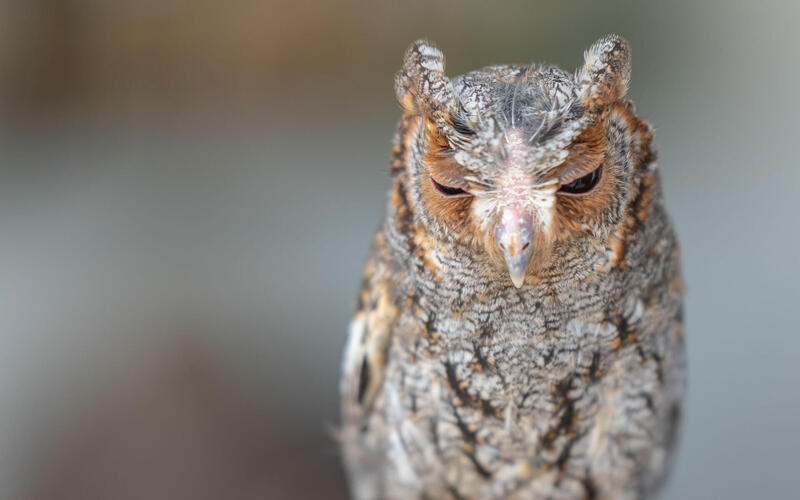
1. The Flammulated Owl
The feathers of the Flammulated Owl are grey and rust in color. They are very small for owls and can comfortably camouflage against dense trees and foliage. These birds are monogamous, with nearly three-quarters of them remaining in long-term breeding pairs. It has a wingspan of 14in, an average lifespan of eight years, a weight of 60g, and its diet consists mainly of insects.
Flammulated Owls are quite territorial, usually defending 5-6 hectares of large territories. While they occasionally may chase other owls away from their dwellings, it is very rare for a fight to take place between two members of the same species.
Not much about this bird’s wintering behavior is known, however, they seem to be spend the colder months dwelling in the forests of Mexico. These birds are most likely to be found in forest habitats, usually more dense and coniferous habitats, as that is where they prefer to nest.
These birds are mostly visible in Colorado during their breeding seasons. They are not permanent residents of the state and can only be found in specific areas
Flammulated Owl nest sightings have been documented in the state’s central regions. During the colder winter months, you will not see these owls in Colorado.

2. The Barn Owl
The Barn Owl has pale plumage and would be considered as medium-sized. They are fitted with buff and gray feathers upon their heads and wings. However, these feathers may appear as white during the nighttime. It has a wingspan of 107-110cm, an average lifespan of four years, a weight of 430-620g, and its diet consists of small rodents.
Location-wise, these birds range from Southern Canada to 48 states within the US, Colorado included. During the breeding season, Barn Owls are monogamous and most of these owls mate for life.
The females prepare the nests for egg incubation, while men protect their nests and bring their food to them. While these birds are territorial for other bird species, with different Barn Owls, they will happily share hunting grounds.
One of these birds will most likely hunt over open grasslands in the night. Barn Owls are one of Colorado’s most common owl species. They are permanent state residents and can be found there all year round. You can see them throughout the entire state, too. In the southeast of the state, the most registered nest places appear, but they have been frequently seen in each region, interacting with other owls in Colorado.
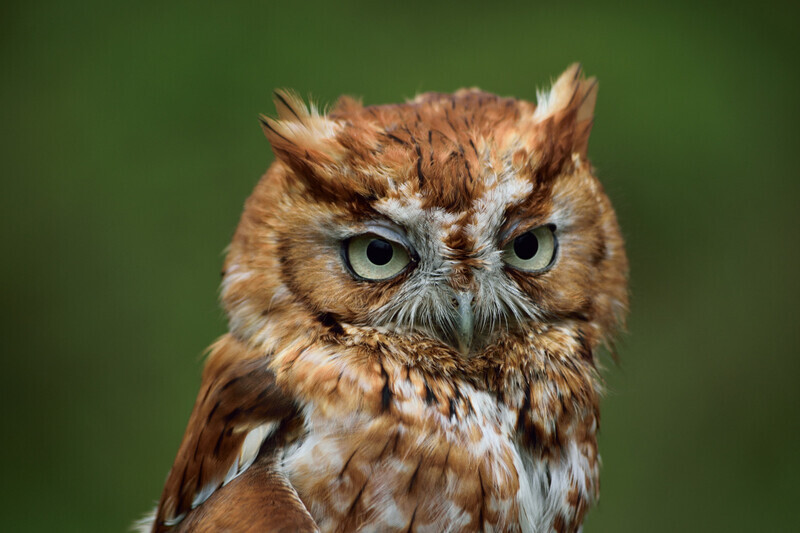
3. The Eastern Screech Owl
The Eastern Screech-Owl is similar to the Western Screech-Owl in appearance, possessing a modest burly body and beige feathers. During the mating period, the males are thought to breed with multiple females, but they will form a pairing with one individual to help them raise the brood. It has a wingspan of 46-61cm, an average lifespan of fourteen years, a weight of 160g, and its diet consists of small rodents and skunks.
These pairings, too, are not long-term and will change every year. Males generally are tasked with defending their territory, whilst females are to remain within the nests and incubate eggs. These birds have successfully bred in city parks, farmland, and suburban areas. They also appear to be content with man-made bird boxes, despite preferring to stay in dense forest areas.
These birds spend the entire year in Colorado. They are, however, only found in a few areas of the state and can only be seen across the state’s eastern border. They appear to be more common in the north east areas of the Colorado border.
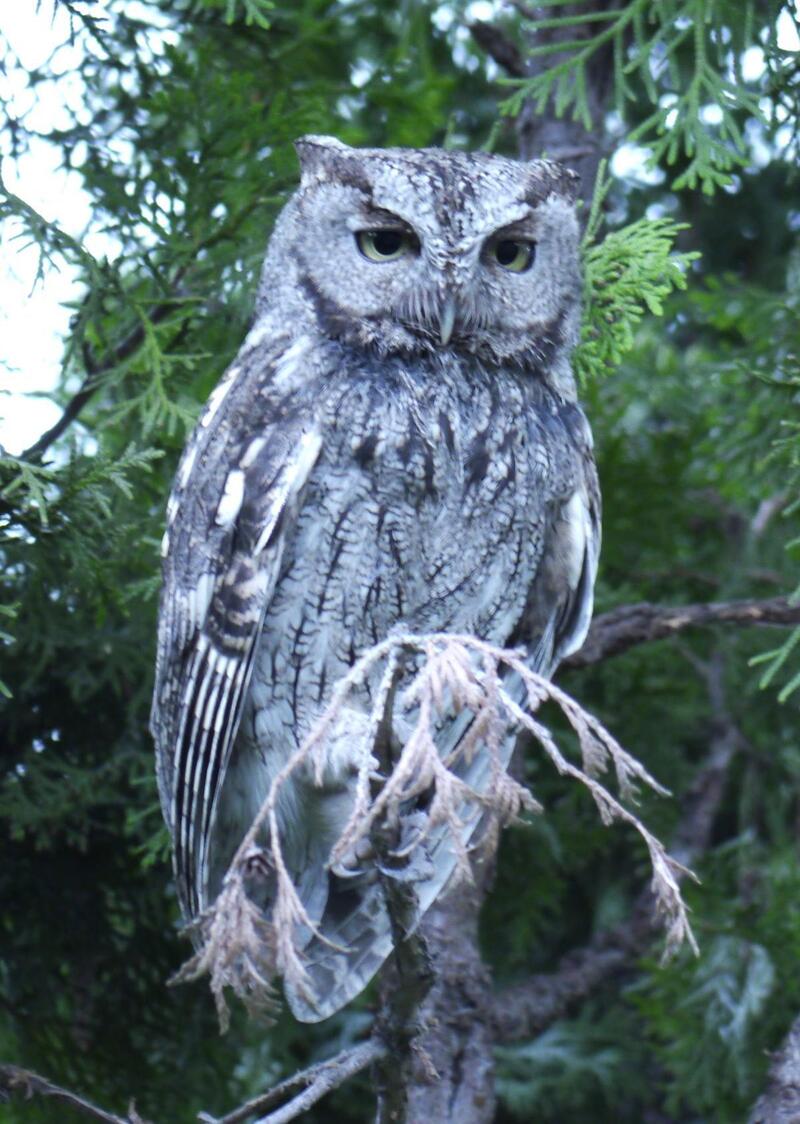
4. The Western Screech Owl
The Western-Screech Owl has a small, stout body that is coated in grey feathers. These birds prefer to construct their nests within open woodlands, particularly along canyon rims. They have also been observed staying close to urban areas in recent years. During the breeding season, males will mate with several females but will still form a breeding pair with a single female so that they can raise the brood together. It has a wingspan of 55cm, an average lifespan of thirteen years, a weight of 143g, and its diet consists of small animals and insects.
When a male attempts to seduce a female, he will offer food to the nest, which is usually located inside a natural tree cavity. Breeding pairs will also sing duets together and contribute to the nest’s protection. The crow often is seen disrupting the nests.
The Western Screech-Owl is a permanent resident of Colorado in certain areas.
During the year, one can expect to find western screech owls in the state’s southwestern areas. There have also been a number of sightings of this owl in the state’s south east. These owls are incredibly unlikely to be seen in northern Colorado.
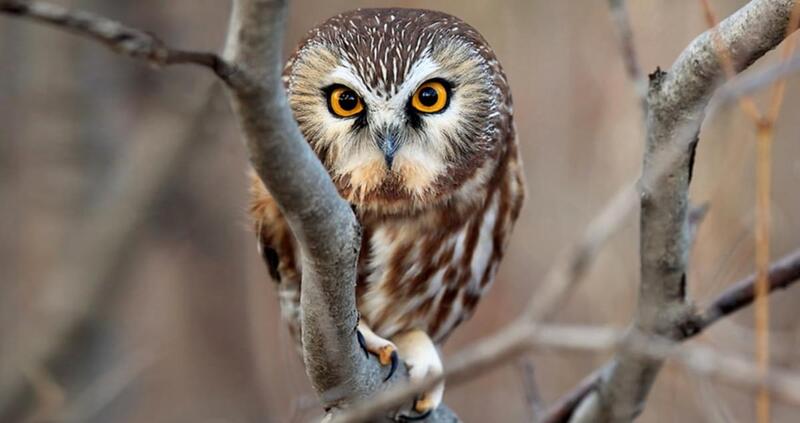
5. The Northern Saw-Whet
The Northern Saw-whet is covered in dark brown feathers and is small for an owl. These small owls nest in a variety of forest habitats and roost throughout the day. During the mating process, males may breed with a large variety of females, but these birds are primarily monogamous and will form breeding pairs. It has a wingspan of 40-60cm, an average lifespan of seven years, a weight of 100g, and its diet consists of small rodents and birds.
These breeding pairs change from year to year, but they frequently stay together outside of the breeding season to defend their territory. Their breeding season lasts from the end of January to the start of May, during which time you can hear their distinguishing “too-too-too” mating song.
When a female enters a male’s territory, he will encircle her 20 times before approaching and presenting the female with a prey of some kind. The most common prey that is gifted is a rodent, such as a lemming or a mouse. These birds are frequently preyed upon by larger species of owls, so consequently, they must be cautious when trying to hunt.
These owls can be found throughout the state of Colorado, but when you see them depends on where you live. Northern Saw-whet owls are permanent residents of Colorado’s western half, where they can be seen all year. Whereas in the eastern half of the state, Saw-Whets are usually only seen outside of their breeding season.

6. The Great Horned Owl
This owl takes its common name due to its lengthy and tapered ears, often said to horns. Horned owls are considered to be quite large for owls. Their feathers are thick and grey-brown in color. It has a wingspan of roughly 140m, an average lifespan of 28 years, a weight of 1.4kg, and its diet consists of small rodents and skunks.
Great Horned Owls form long-term breeding pairs, and such pairs frequently remain loyal to each other, even away from the breeding season. During mating seasons, they remain monogamous.
The breeding pair is very protective and will protect their dwelling area with a sequence of rapid hoots. Fighting is common, and breeding pairs have been known to kill other horned owls who venture too near their nests. Crows and other birds will harass horned owls with the intention of causing them to accidentally forsake their nests and eggs.
This is one of the most numerous and widely spread owl species. They are also the most common owls in Colorado. Great Horned Owls are year-round residents of Colorado and can be found throughout the state. The western half of the state appears to have the highest density of sightings.
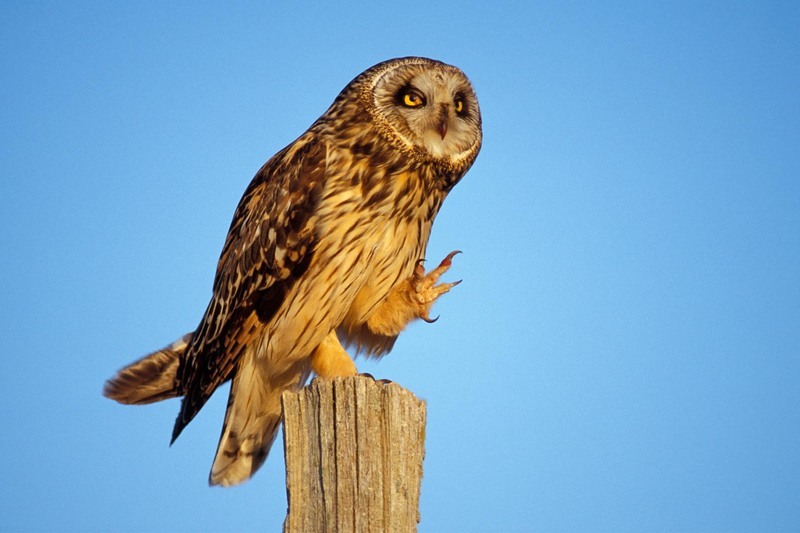
7. Short-eared Owls
Short-eared owls are so named because they lack recognizable ear tassels. Their stocky bodies are covered in brown feathers with white patches. These owls will hunt during the day and at night, getting the benefit of their grassland ecosystems. The open areas allow them to spot and swoop down on their prey more easily. It has a wingspan of 85-110cm, an average lifespan ranging from four to twelve years, a weight of 206-475g, and its diet consists of small rodents such as voles.
Short-eared owls form breeding pairs and are monogamous during the breeding season, though it is unknown whether these breeding pairs are permanent or change every year. Breeding pairs will burrow on the ground in tall grass; they only roost in trees during the winter months, particularly if there is heavy snowfall.
Males will feed the females while the eggs are developing and will also defend their territory with a series of harsh calls. Short-Eared Owls frequently form loose colonies of many individuals that stay close to each other all year, even during breeding season. The Short-Eared owl has a very broad range and can be found throughout Colorado. They are most common to the north of Colorado, where they will frequently spend the entire year as fixed inhabitants.
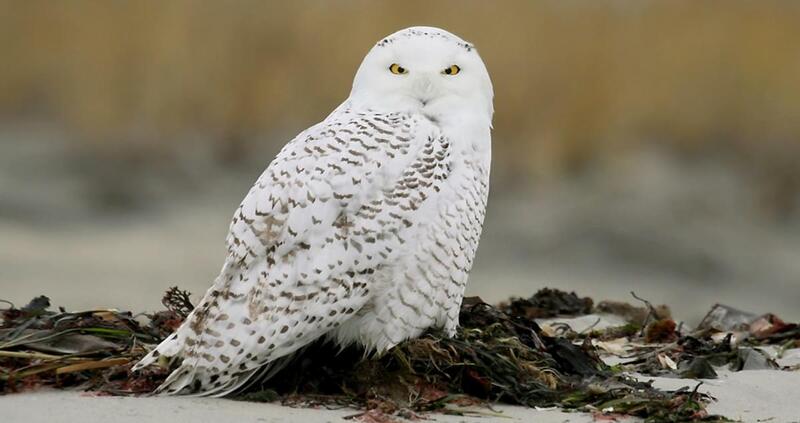
8. The Snowy Owl
These owls, which are on the larger side of the size distribution, are coated in distinctive and lush white feathers. Snowy owls are arguably some of the prettiest owls in Colorado. Individual speckling of black and grey on the tips of their feathers is common. It has a wingspan of 150cm, an average lifespan of ten years, a weight of 2kg, and its diet consists of small birds, rodents, and fish.
Snowy owls are most commonly seen in tundra habitats and across open plains. They are fiercely protective of their territory and will engage in confrontations with other birds that venture too near.
There has even been a report of snowy owls battling an arctic wolf. Snowy Owls tend to rest on high points such as power lines in order to better observe their territory and hunt for prey.
Males perform a special courting performance for females, which consists of diving swiftly towards the ground while forming a v shape with their wings. They will usually have a small prey item in their claws, and will drop it as a gift for the female when they get close to the ground.
Aside from that, little is known about their breeding habits, and it is unknown whether they are monogamous or not. These birds do not breed in Colorado and do not complete their breeding seasons there. They are obtrusive visitors who usually just fly by. Having said that, the ideal time to view these birds in Colorado is during the winter and in the northern regions of the state.

9. The Boreal Owl
A little owl with a square skull and no obvious ear tufts, the Boreal Owl is a small species. It has a sturdy body with small tail feathers. Their feathers are a rich brown color, with white spots and streaks on both their backs and bellies. It has a wingspan of 50-62m, an average lifespan of sixteen years, a weight of 120g, and its diet consists of small animals and insects.
Boreal owls are solitary birds that do not roost together, even though they form sexual pairs. Only for courtship, mating, and feeding will they engage with one another. Although these birds are monogamous, they have different breeding couples each year.
Males will defend their territory, although usually only the region immediately surrounding the nest cavity. A series of cries and songs can be used to defend this cavity. These birds prefer to reside in a variety of different habitats.
They will use a series of calls and songs to defend it. These birds prefer to dwell within a multitude of forest areas, and in North America, they frequently remain in woodland areas near hills and mountains.
The Boreal Owl can be found in Colorado throughout the entire year, though not as commonly seen as other owls studied in the state. They can be found in both northern and southern regions of Colorado, but mostly in the center. Sightings of this species of owl near Colorado’s western or eastern boundaries are extremely rare.
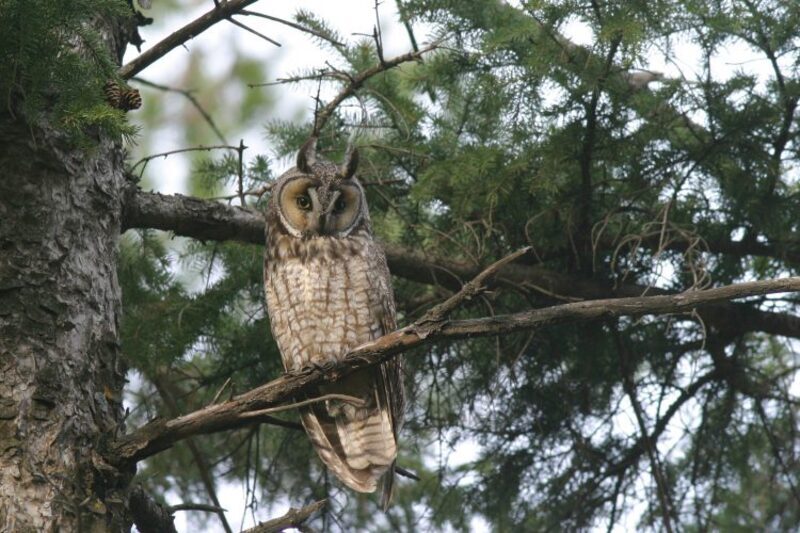
10. The Long Eared Owl
The Long-Eared Owl has long and prominent feathered ears, which is where it gets its name. They generally have black and brown plumes covering their bodies as well as orange faces. It has a wingspan of 90-100cm, an average lifespan of four years, a weight of 250g, and its diet primarily consists of mice and rabbits.
When they breed, these owls prefer to roost within dense forests. When the breeding season is no longer in session, they tend to roost sparingly organized groups consisting of up to 100 owls. These colonies will nest close one other throughout the breeding season, but they will not roost together.
During the breeding period, these birds form mating pairs and stay monogamous. It is uncertain, however, if these breeding pairs are permanent or if they create new breeding pairs each year. Males will court females by flying in a series of complicated crisscross patterns while displaying a mating call.
These birds are more plentiful in the western half of the state and will remain in their native areas all year. They can also be found in the eastern half of Colorado, but they are less common and only visit these areas during the breeding season. This also implies that they will be less active in these areas of the state because males need to hunt less outside of breeding seasons.
Related
- Owls aren’t the only ones enjoying Colorado, our small feathered friends love it too: Hummingbirds in Colorado (10 Species Pictured)
- Hawks, like owls, love Colorado because of the hunting opportunity the state provides to them. Learn more about the hawks in Colorado, and how to identify the 13 different species you might come across.
Leave a Reply